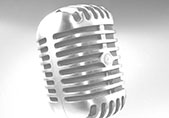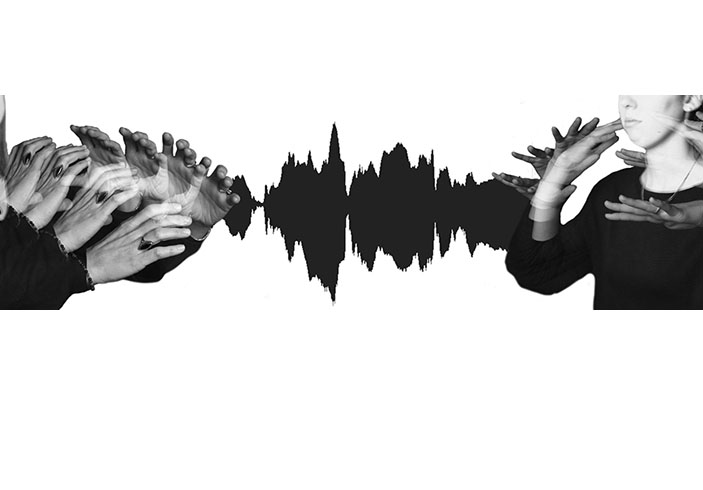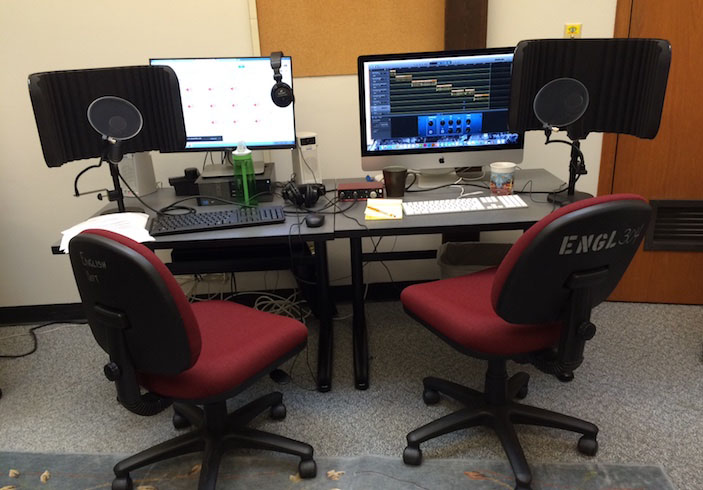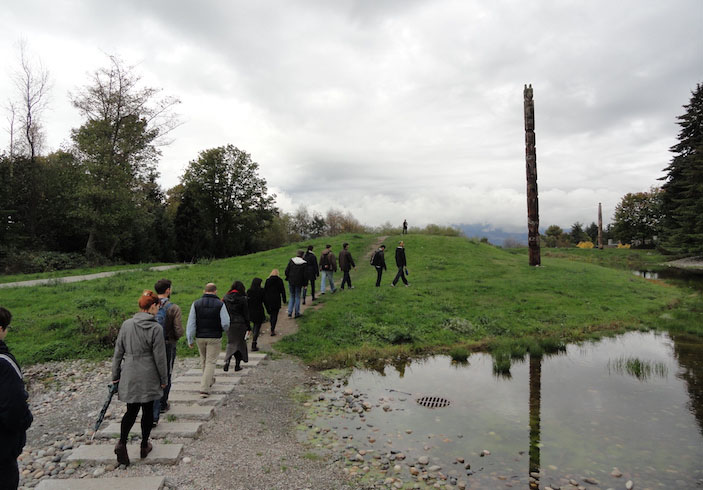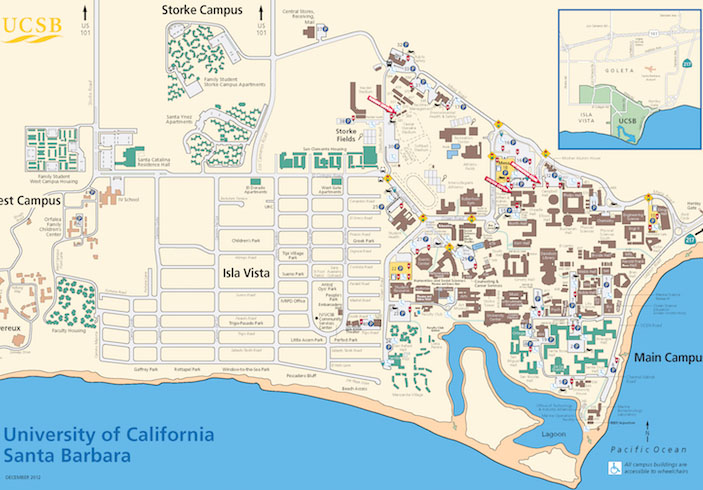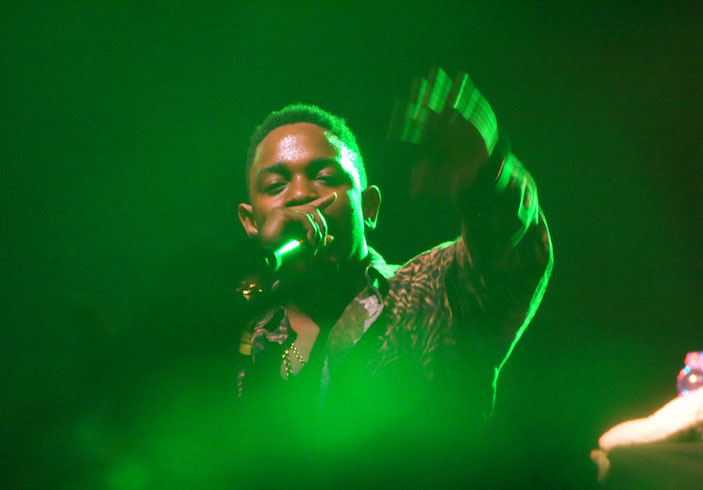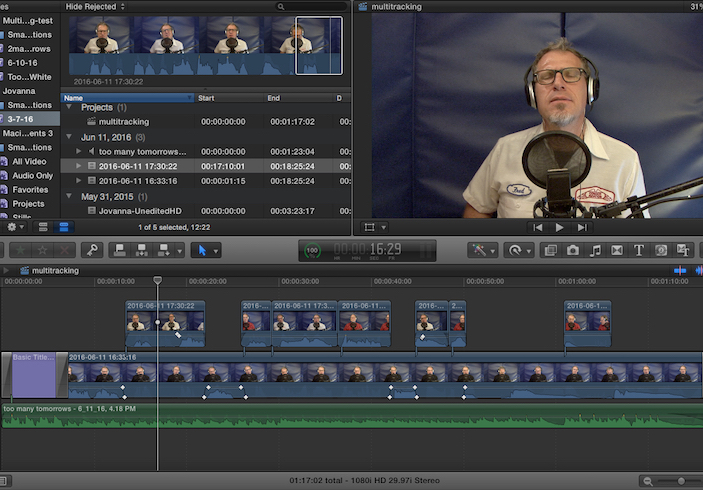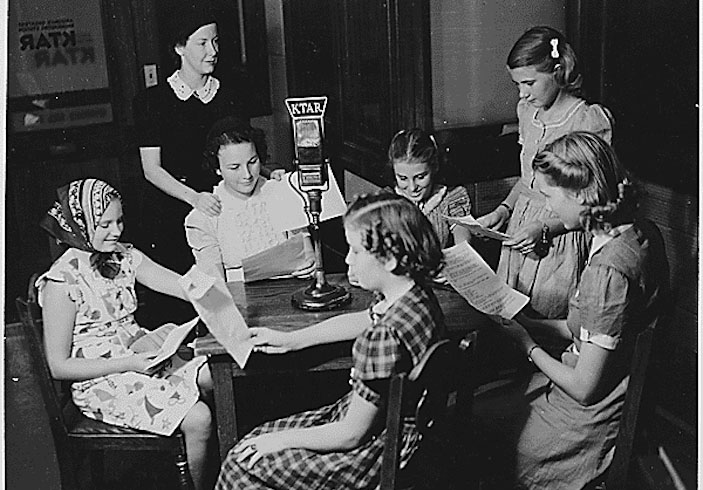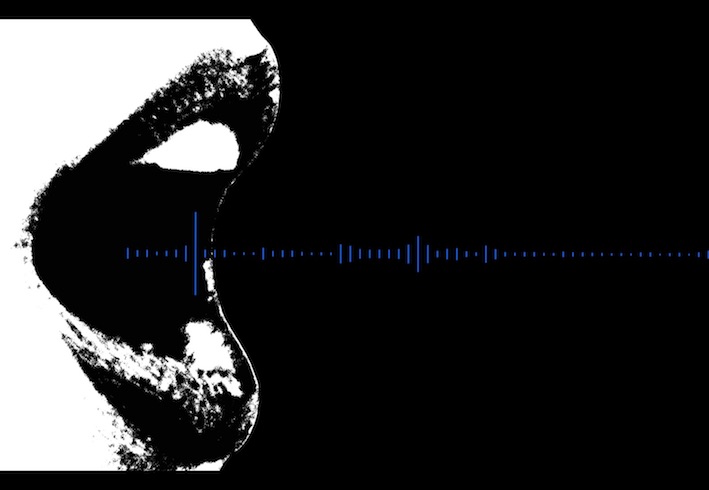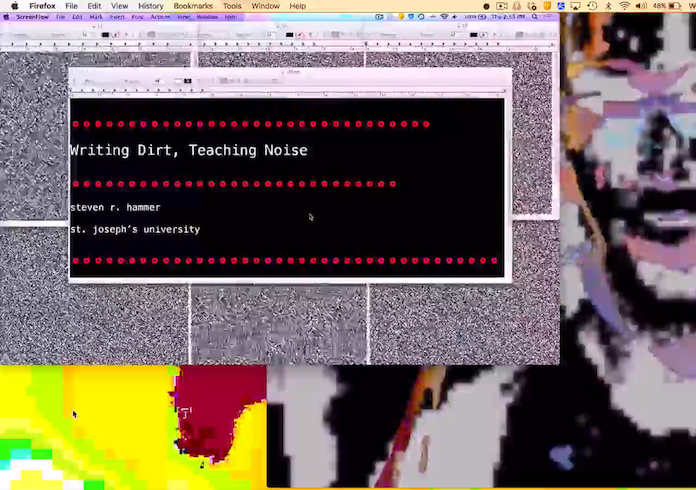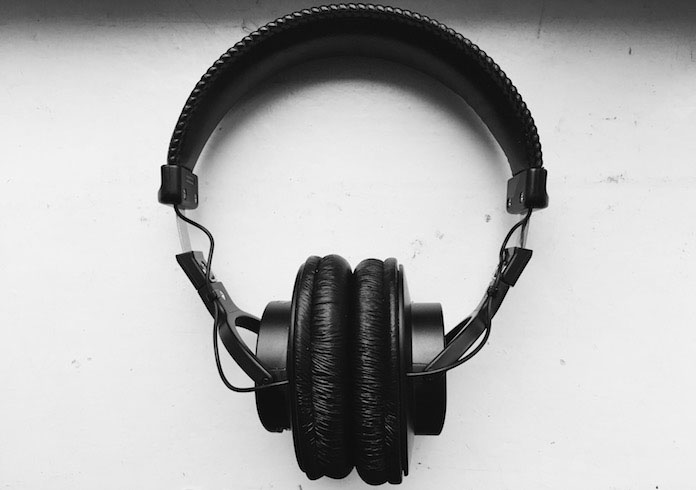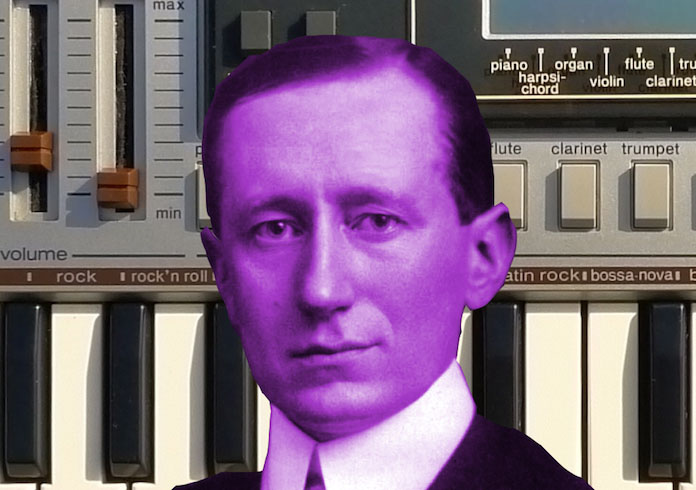Soundwriting Pedagogies
Edited by Courtney S. Danforth, Kyle D. Stedman, & Michael J. Faris
The availability of digital tools has made it easier than ever to record and edit sound, and teachers of composition have noticed. We record sonic texts for our students, and we give aural assignments in many genres: audio essays, podcasts, sonic remediations, interviews, radio shows, think-alouds, experimental pieces, and much more. We're entering an age of soundwriting, where the affordances of sound intersect the pedagogies and practices of writing and rhetoric.
In the chapters that follow, you will find theories, examples, and lots of audio to encourage the use and value of soundwriting in composition, writing, rhetoric, and communications classrooms. Crank it up.
Preface
[cool "Soundwriting Pedagogies" swooshy sonic title plays]
Courtney [to audience]: Hello and welcome to Soundwriting Pedagogies. I'm Courtney Danforth,
Kyle: I'm Kyle Stedman,
Michael: and I'm Michael Faris. You're listening to the preface of our edited collection.
Kyle: There's a lot going on right now with sound in rhetoric and composition studies. This book zeros in on one specific aspect of that groundswell of interest: using sound in writing studies pedagogy.
Michael: This collection presents an overview of issues and practices in an attempt to build the community of soundwriting pedagogues, encouraging readers…
Courtney [to Michael]: Hey Michael, I think that should be "listeners" instead of "readers," right?
Michael [to audience]: … encouraging you listeners to jump in.
Courtney: If you have never read a scholarly edited collection with your ears before, and who has?
Kyle: I haven't.
Michael: Me neither.
[Crowd says it's never heard scholarship before either.]
Courtney: Well, if that's you too, we want to use this preface to give you an idea of what to expect from the rest of the book. First, this work is playful. In fact, playfulness was a philosophical priority for the whole project.
[playground sounds]
Kyle: When we say "play," we mean that it is experimental, it enacts the theories it engages, and it is fun, wherever that was possible.
Michael: So you're going to hear lots of student voices, plus the voices of teachers, scholars, artists, and editors.
Kyle: There's drama and archival stuff and narrative and interview and music and sound effects.
[comedic boing]
Courtney: You'll even hear noise and silence.
Kyle: This isn’t just a book about sound, it's in the form of sound.
Michael: That is, throughout this collection, contributors draw on the affordances of sound to theorize and share practices, so that they (and we) can make sense in ways that might not work in traditional, alphabetic written prose.
Courtney: We're excited for you to hear it.
Michael: So the point of this preface is to tell you a little about each chapter in the collection and then to share some ideas about how you might want to navigate or access this book.
Courtney: You'll notice that these chapters are disparate in length, style, media, and foundational theory. Thatʼs on purpose! These differences suggest that sound is a dynamic topic and tool, and people work on it from varied approaches. We also want to challenge notions of what an edited collection can look like—or sound like. We vary chapter length, style, and media choices on purpose to highlight how some arguments are better suited to different modes of presentation.
Additionally, we've designed this collection with accessibility in mind: we provide extensive transcription for all the audio in this collection. Just a heads up: We like what Sean Zdenek (2015) says about closed captioning (though we're discussing transcripts). They aren't meant to exactly transcribe sounds; instead, they transform meaning: They contextualize, clarify, and alter meaning for reading (whether you are just reading, or whether you are reading as you listen). Our transcriptions provide a non-listening audience something like a listening experience, including suggestions about what the sounds are meant to evoke.
Kyle: Yes! So let's dive into a preview of what's to come. First, Courtney and I produced a lengthy audio essay as the introduction. It starts out by examining the meaning of the word that we're using—soundwriting—and then it surveys existing rhet/comp scholarship on teaching students to record, edit, and share sound projects.
Courtney: The second half of the introduction features a series of etudes—skill-building exercises—as a starting place for teachers interested in trying new soundwriting activities in their own classrooms. Letʼs hear a quote from that chapter:
[cassette tape deck clicks before and after each excerpt from chapters]
Courtney: … because of the content of the reading, it involved Morse Code and how to transmit in Morse Code, that's why I tried that as a motif. It's important in the history of sound transmission, and it's compelling!
Kyle: It is compelling.
Courtney: And it's also binary, right? So automatically it makes me think that there is data stuff—something that can be done with Morse Code that is not as accessible in other forms of data. Plus it's just groovy.
Kyle: It is groovy. I think those should be the two things that our students ask themselves in their heuristic when they're deciding if they should make a choice. Does it in some way connect with the deeper meaning of my piece, and is it groovy?
Michael: Our opening chapter, titled "Do You Hear What I Hear? A Hearing Teacher and a Deaf Student Negotiate Sound," explores how Jennifer Buckner, a hearing teacher, and Kirsten Daley, a deaf student, negotiated sound as a medium in a multimodal comp class. In their collaboration, Buckner and Daley explain how sound became an option for more than just the hearing world only; soundwriting also "resonate[s] with bodies that speak with hands and hear with vibrations."
Jennifer: Insert narrative manifesto. You see, Kirsten's voice won't make sense in this medium. She does have a voice. And she does make sense. Actually, so much sense that she had me rethinking everything I thought I knew about sound just about the time I was going to wax professorial in a multimodal comp class.
Kyle: Giving a soundwriting assignment to a single class is certainly challenging, but we also have to ask ourselves what happens when you scale up that assignment and give it to an entire writing program. In "Recasting Writing, Voicing Bodies: Podcasts Across a Writing Program," Jeremy Cushman and Shannon Kelly walk us through their experience, with lots of interviews from the instructors who teach in their program.
Jeremy: So in this chapter, you'll hear us working alongside first-year writers, graduate TAs and even people like Cindy Selfe to importantly surface that writing in audio is so much different than simply writing with audio.
Shannon: All of which holds open space for what's possible when teaching podcasts across a writing program.
Courtney: In "A Pedagogy of Listening: Composing with/in Media Texts," Milena Droumeva and David Murphy highlight the ongoing sonic pedagogies that have been practiced at Simon Fraser University since the late 1960s. Their work in acoustics leads to interdisciplinary media studies and communications teaching. They use both listening and audio production assignments alongside "real-world professional roles" for their students.
Milena: So in here, engagement with sound has included both listening activities such as soundwalks, sound maps, various "ear cleaning" exercises that come from R. Murray Schafer's sound pedagogies, as well as written reflections (sound journals) that developed from the sound diaries that started with the World Soundscape Project started in the seventies.
Kyle: Patricia Fancher and Josh Mehler use their chapter to examine voice and curation as community-building. In their classrooms, they focus on sound and place.
Patricia: We created this project, "Sounding the Stories of Isla Vista," in which we write and talk about our experiences teaching soundwriting to students who are researching their own community, Isla Vista, California.
Josh: UCSB students call Isla Vista their home for just a few brief years, so their connection with that place is often tenuous. I sought to design an assignment that asked students to explore and compose the histories, cultures, and lives of this place they call home in order to help students build a deeper connection with this community and to, hopefully, help foster conversation between UCSB students and other residents of IV.
Courtney: Next, we've got Michael Burns, Timothy R. Dougherty, Ben Kuebrich, and Yanira Rodríguez making their case for soundwriting as a liberatory pedagogy. In "Soundwriting and Resistance," these four teachers discuss how hip-hop has helped them challenge their students' and their institutions' assumptions about race.
Yanira: You know, it was joyful for me to teach with sound. It was different. I do want to hold on to that because it created a different classroom regardless and in some ways opened up really, you know, great conversations, important tensions, I thought…
Michael: So they start to see that, "Okay, wait a minute. You mean that there are other rhetorical traditions that have other values and have other priorities that then facilitate a completely different understanding of the text?" And so…
Tim: When there's a white body in the classroom it seems to be easier for students to buy in by treating it as a merely academic exercise.
Ben: In the question of how to use soundwriting in the classroom, we've discovered our own complications using sound. How do we honor contexts and history? How do we honor the urgency of social movements?
Kyle: Then, we have a piece called "Sleight of Ear: Voice, Voices, and Ethics of Voicing," in which Bump Halbritter and Julie Lindquist use a discussion of the sound in a video project to get at a bigger question:
Bump: We suggest that soundwriting that explores the rhetorical and ethical affordances of audible human voices may foreground the ethical decisions implicit in writing.
Julie: And we offer all of this in the service of returning to the pedagogical values of soundwriting as both a medium of expression…
Bump: and as a heuristic for methodological invention in the teaching and conduct of qualitative inquiry.
Courtney: Jason Palmeri and Ben McCorkle have been doing a ton of work with old issues of English Journal. In their chapter, they study radio pedagogies used by soundwriting English teachers in the 1930s, and they even produced their chapter in the style of 1930s radio.
Ben: In "'English via the Airwaves': Recovering 1930s Radio Pedagogies," Jason Palmeri and Ben McCorkle—
Jason: Hey, that's us!
Ben: Oh, yeah, you're right! Well, in this audio essay, we take you on a journey back to the last great heyday of sonic writing in the discipline of English: that "golden age" of radio in the 1930s. We examine a corpus of texts published in English Journal from that era. You'll hear us discuss what today's compositionists can learn by exploring articles written by 1930s English teachers about their own classroom experiments with radio production.
Kyle: In "Composing the Artist–Medium," Trisha N. Campbell explores sound practices when—and here's a quote from her webtext—when "the artist, student, or researcher undertakes a practice of creatively and critically working with media, source materials, and digital technologies to inhabit, appropriate, and perform source material through their own voice or body, practicing with the media, recording and editing, in order to see what output or thinking might emerge."
Trisha [whispered, repeated, and getting louder]: empathy, embodiment, artist–mediums, voices.
Courtney: In our first chapter, we have silence that is not silent, and in our last chapter, Steven R. Hammer gives us noise that is not merely noise. In "Writing Dirt, Teaching Noise," he revalues noise, introduces methods for teaching with it, and argues that soundwriting should not be undertaken without also engaging with noise.
Steven: What is noise?
Noise can be described legally, scientifically, mathematically, musically… We could increase this list for some time. How might we think about defining noise as soundwriters and teachers of soundwriting?
Michael: Assembling this book was a lot more like producing an album than any of us expected.
Kyle: But not like a demo since we didn't write most of the chapters.
Courtney: More like a mix tape.
[cassette clicks, cassette fast-forwarding, fumbling noises, cassette clicks]
Kyle: You remember making mix tapes, right? I used to spend hours pulling together my favorite songs in the perfect arrangement as gifts for my favorite people. This book is kind of like that.
Michael: We have chapters that will make you want to jump up and dance.
[dance music]
Courtney: And chapters that will startle you.
[gasps]
[pause]
[thunder]
Kyle: And chapters that will provoke the kind of deep contemplation that will make you stare moodily out of a rainy window…
[record scratch]
Michael: Yeah… So we've got several different ways to access this book because that's what the topic, authors, and audience require.
[drum loop fades in slowly]
Courtney: Each chapter has its own webtext with multimedia elements including transcripts, and some other stuff like assignment sheets, videos, and example student projects if you want to see and click while you listen.
Kyle: We've also provided an audio playlist so you can listen to the audio portions while your eyes and hands are otherwise engaged.
Michael: And we've attempted to make this collection as accessible as possible: All audio has accompanying transcripts, and each chapter is designed responsively, so you should be able to listen or read on your preferred computer, tablet, or mobile device.
Courtney: Hey, there's just one last thing before we let you get to the book.
Kyle: Yes! We want to take ten seconds to thank everyone who helped us make this book, but whose names and voices do not appear. We have not forgotten you!
Michael: Thank you to our mentors, colleagues, friends, lovers, families, pets, baristas, housekeepers, choirmasters, radio heroes, rock stars, outfitters, editors, publishers, teachers, and students.
Courtney: And thanks also to you listeners. We hope you hear something good.
Kyle: And make some noise!
[cool "Soundwriting Pedagogies" swooshy sonic title plays]
[Michael does sound effects]
[Courtney laughs]
[Kyle does sound effects]
References & Sources
acclivity. (2006, October 5). Cassetterewind [Flac file]. Freesound. Retrieved from http://freesound.org/people/acclivity/sounds/23393/
allietron. (2015, April 11). No [Wav file]. Freesound. Retrieved from http://freesound.org/people/allietron/sounds/269542/
BlueDelta. (2016, November 4). Thunder/rain low frequencies 4-channel-48kHz [Wav file]. Freesound. Retrieved from http://freesound.org/people/BlueDelta/sounds/367222/
Dehaney, Leigh Anthony. (2006, October 27). ..and the Mellotron unraveled [Photograph]. Flickr. Retrieved from https://flic.kr/p/qPWJQ
dekstromoramid. (2017, February 6). Dance kit sample [Mp3 file]. Freesound. Retrieved from http://freesound.org/people/dekstromoramid/sounds/380077/
Domar1979. (2013, November 14). Playground whit childrens and parents in Gandia Spain [Aiff file]. Freesound. Retrieved from http://freesound.org/people/Domar1979/sounds/207214/
filmsndfx. (2016, December 1). Classic vinyl record scratches [Wav file]. Freesound. Retrieved from http://freesound.org/people/filmsndfx/sounds/369673/
finalobserver. (2015, December 10). Classroom-talk_01 [Wav file]. Freesound. Retrieved from http://freesound.org/people/finalobserver/sounds/330732/
Glaneur de sons. (2007, April 25). woosh_01 [Wav file]. Freesound. Retrieved from http://freesound.org/people/Glaneur%20de%20sons/sounds/34171/
jpkweli. (2012, May 4). Cassette player ejecting [Wav file]. Freesound. Retrieved from http://freesound.org/people/jpkweli/sounds/154756/
Krisboruff. (2006, April 7). Fumbling_with_matches(better_peak) [aiff file]. Freesound. Retrieved from http://freesound.org/people/Krisboruff/sounds/17746/
kxtells. (2012, January 31). Drumbeat 6 [Ogg file]. Freesound. Retrieved from http://freesound.org/people/kxtells/sounds/144555/
Shaw, Jonathan [InspectorJ]. (2016, May 12). Comedic boing, A [Wav file]. Freesound. Retrieved from https://freesound.org/people/InspectorJ/sounds/345689/
Timbre. (2010, October 9). Small group gasps (before-after clean) [Wav file]. Freesound. Retrieved from http://freesound.org/people/Timbre/sounds/106391/
Timbre. (2013, January 2). Metal hits glass ping (synthesized) [Flac file]. Freesound. Retrieved from http://freesound.org/people/Timbre/sounds/172965/
Zdenek, Sean. (2015). Reading sounds: Closed-captioned media and popular culture. Chicago, IL: University of Chicago Press.
